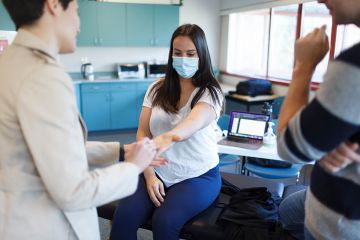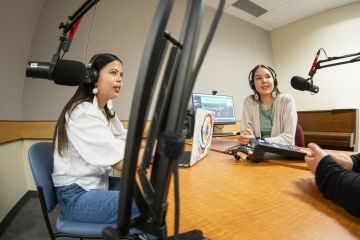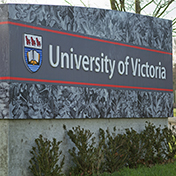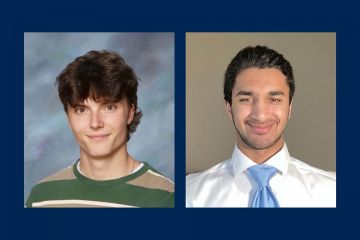The Mercer Report visits UVic and exercises its brain
Fine Arts, Engineering, Science
- Suzanne Ahearne
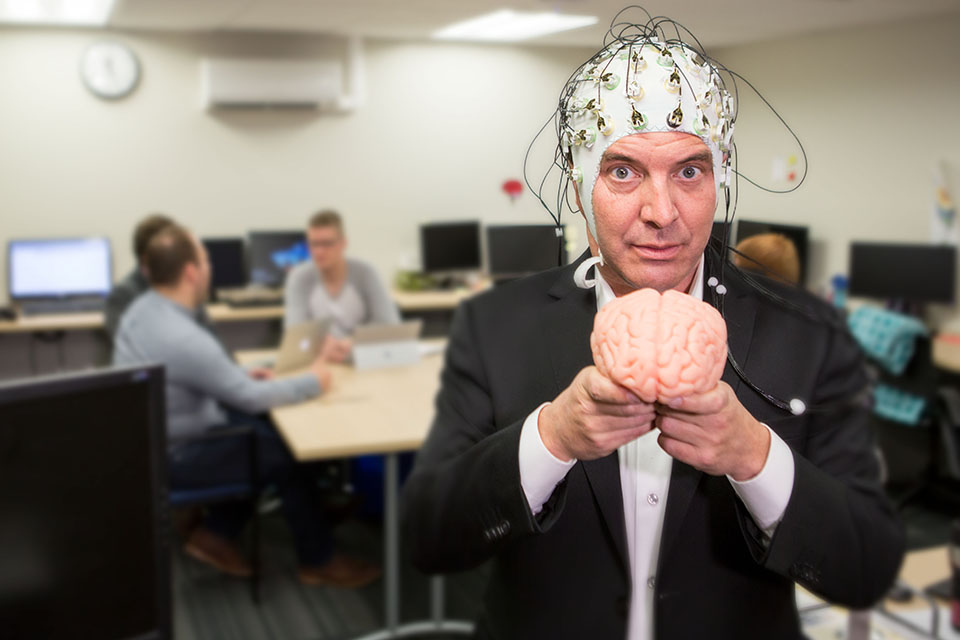
Measuring the brainwaves of a comedian, test-driving 3D-printed hands, and opera-ing the news
On Jan. 16, the Rick Mercer Report launched its 2018—and final—season on CBC. It features the comedian and satirist's visit to UVic campus last fall in which Mercer gets a brainwave assessment in Olav Krigolson’s neuroeconomics lab, test-drives a 3D-printed prosthetic at the Victoria Hand Project lab and attempts to sing opera with music professor Benjamin Butterfield.
“This campus has it all,” Mercer says as he starts his walkabout. “Beautiful on the outside, cutting-edge on the inside.”
President Jamie Cassels welcomed Mercer when he arrived on campus and described UVic as, “Goldilocks size: big enough that we offer our students an amazing number of choices but small enough that it’s still human scale.”
Mercer visits Olav Krigolson’s Neuroeconomics Lab where the neuroscientist and associate director of the Centre for Biomedical Research uses brain imaging to understand how people learn and make decisions. Fitted with an EEG cap with wires dangling, Mercer wonders aloud if one day we might get to the point where a single man enjoying a night on the town could wear a portable device, and when he’s about to make a decision, his smart phone bleeps and says, “Go home right now. For god’s sake, go home!”
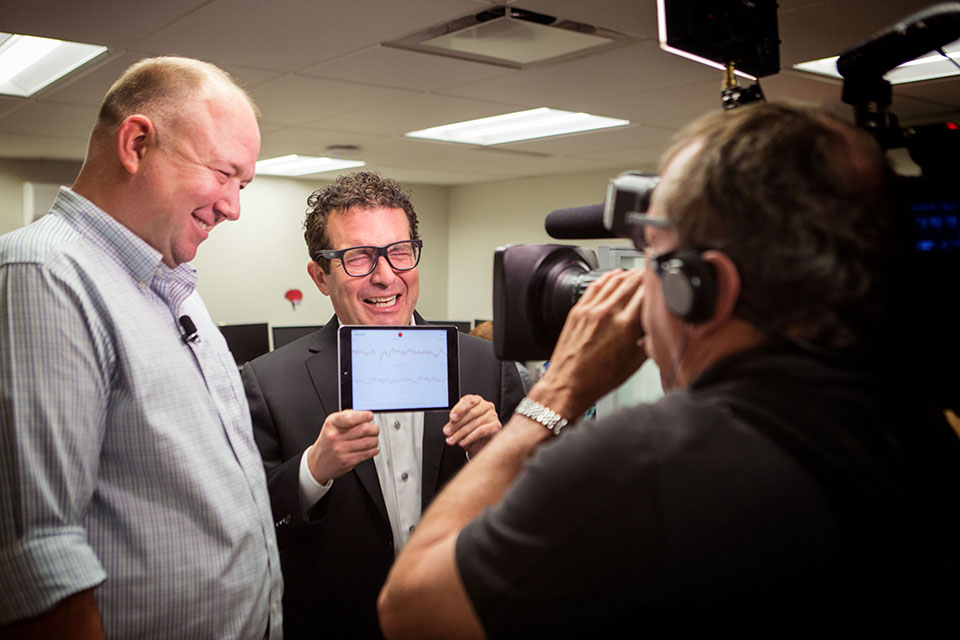
Not there quite yet, Krigolson laughs, and then shows him his newest device being piloted by researchers in the lab to measure the effects of fatigue on medical students, doctors and nurses: a pair of glasses with a built-in EEG device that provides real-time brainwave feedback to an iPad. Both say they are “stunned” to see how active his brainwaves are.
Next up, he visits Nikolai Dechev’s lab in the Engineering/Computer Science building where the Victoria Hand Project (VHP) is based. VHP makes 3D-printed hands for the developing world. They’re currently working with on-the-ground clinicians in Nepal, Cambodia, Ecuador, Guatemala, Haiti and Egypt to custom-fit and print prostheses at a cost of $110 for materials.
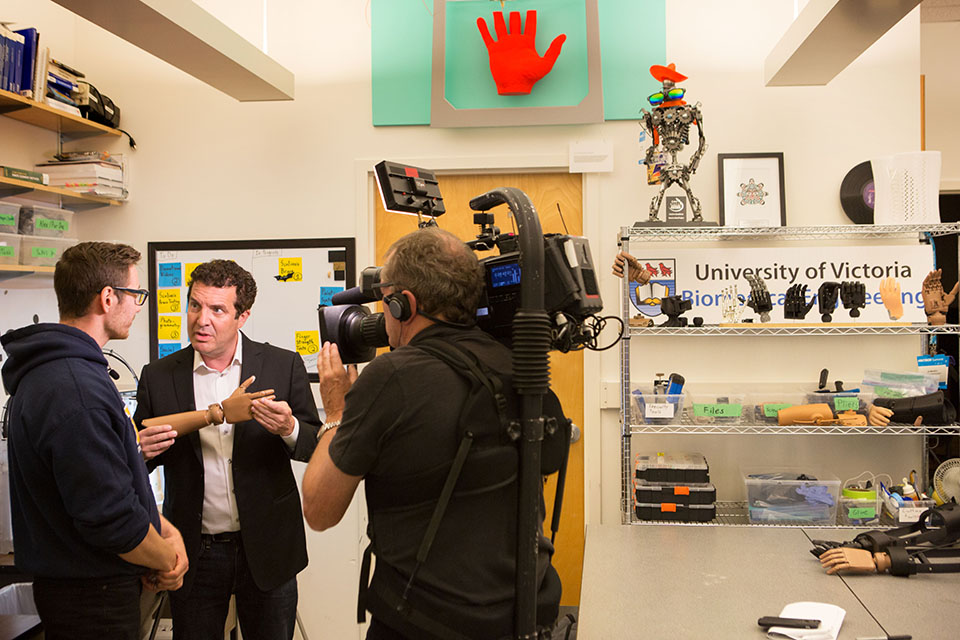
Mercer test-drives the shoulder rig and prosthetic hand with the help of engineering alum and VHP COO Michael Peirone, and Chris Williams, a Victoria amputee who for years has provided user feedback to the designers on various iterations of the hand.
“I’ve been bored with almost every story about 3D printing for a while,” Mercer said in a CFUV interview Jan. 16. “I didn’t see it as changing the world. But this is different,” he told the campus radio station. “Because of this program at UVic, a person could walk in if they’re missing an arm, they get measured, scanned and within a week, they’ve got an arm and it only costs about $100.”
He said that in the 20 years he’s been interviewing people with prosthetics, there’s been constant advancement in prosthetics, but it’s only been accessible to people in the first world because of the expense. In the developing world, there’s been very little advancement. “But now,” he said, “thanks to the University of Victoria, some people are getting their first prosthetics. It’s really incredible.”
His last stop is to have a singing lesson with voice professor and opera singer Benjamin Butterfield. Master’s voice student Taylor Fawcett joins the two of them on the stage of the Phillip T. Young Recital Hall.
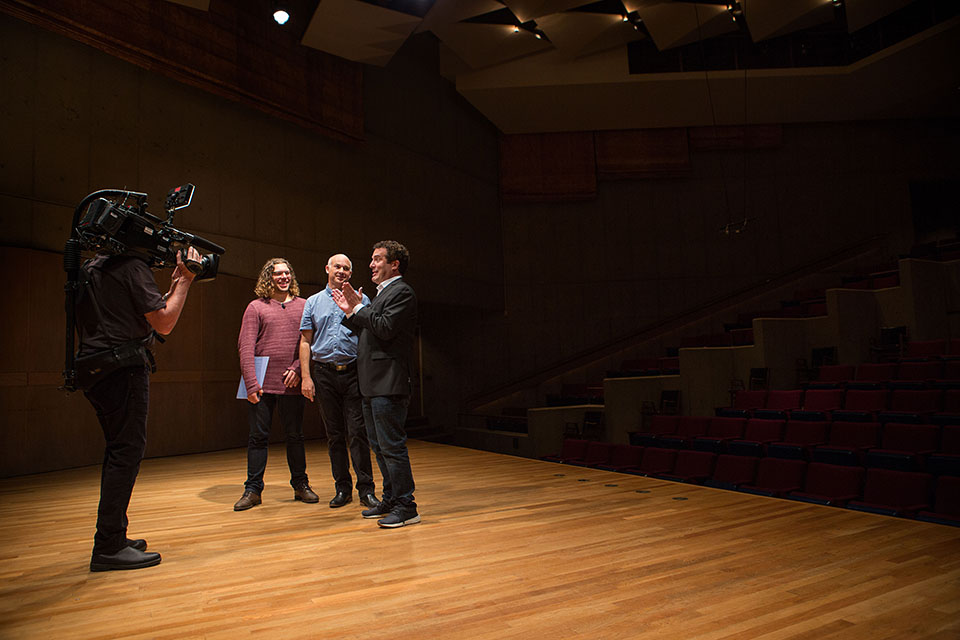
Mercer tells them: “I can’t sing and it’s one of my big regrets. There is nothing I would love more than to be a song and dance man.”
“Really, you can sing anything,” Butterfield tells him. Rick took him seriously and pulled out his phone and said, “Siri, give me the Globe & Mail’s headlines” . . . and then the three of them sing the day’s headlines about the contracting economy and new Statistics Canada report with operatic flare.
“Don’t drone,” Butterfield coaches him. “Don’t drone?” Mercer replies. “It’s what I do for a living!”
The show’s final bumper features a loud send-off from the hundreds of students who showed up at the fountain to greet one of Canada’s favourite comedians.
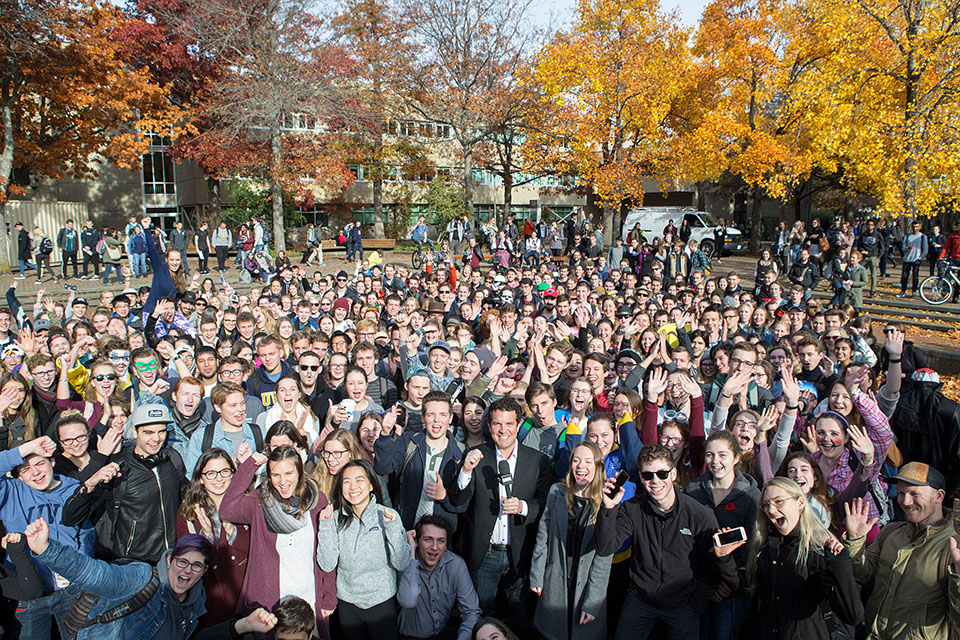
You can also read Welcome Centre tour guide Isabel Steinberg’s MyUVic Life blog post about her encounter with Mercer when she presented him and his film crew with some UVic hoodies.
Photos
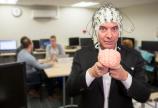
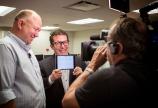
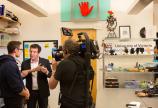
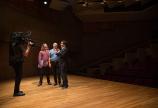
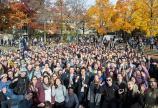
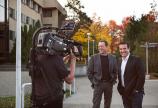
In this story
Keywords: student life, music, biomedical, neuroscience, Centre for Biomedical Research, Victoria Hand Project
People: Jamie Cassels, Olav Krigolson, Michael Peirone, Benjamin Butterfield
Publication: The Ring

